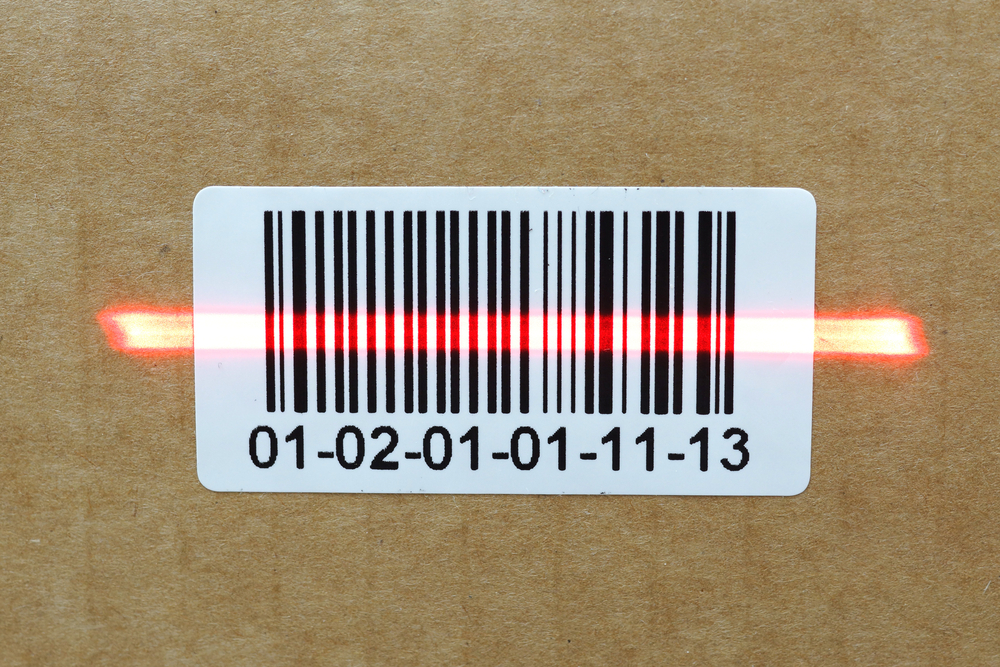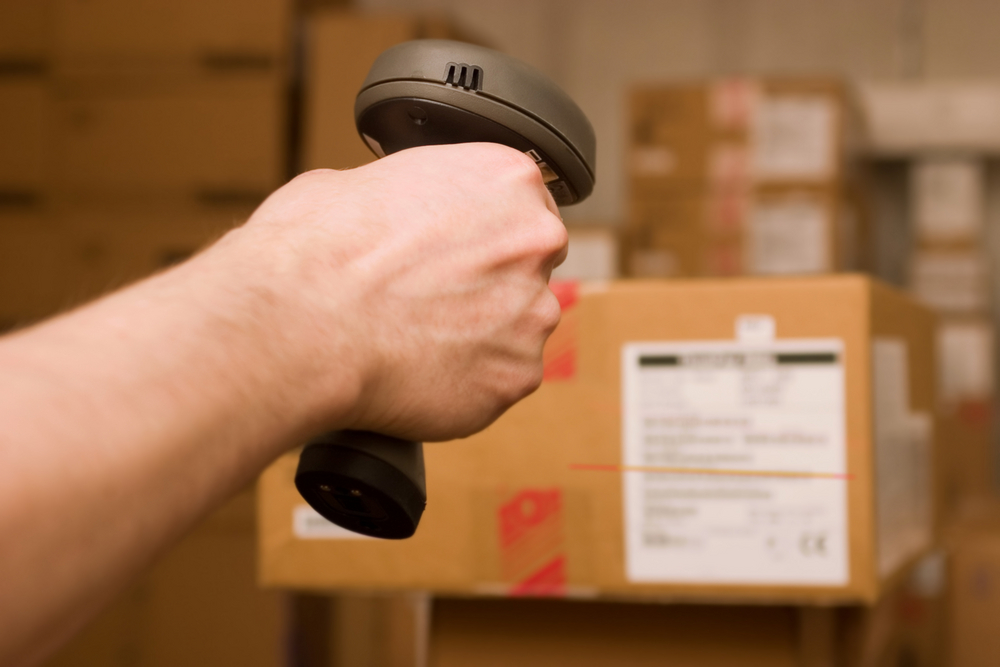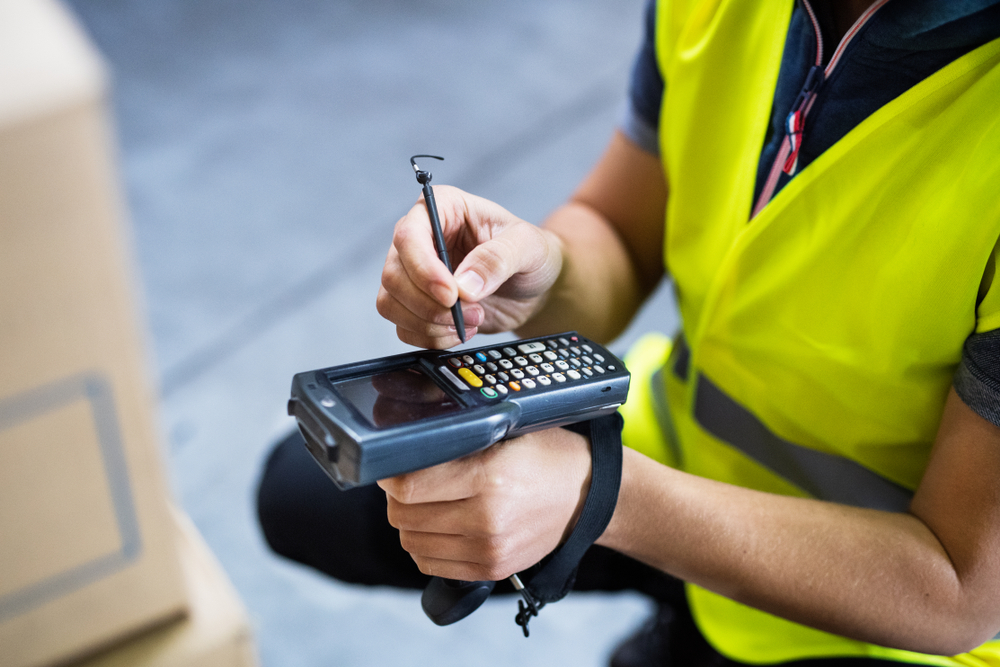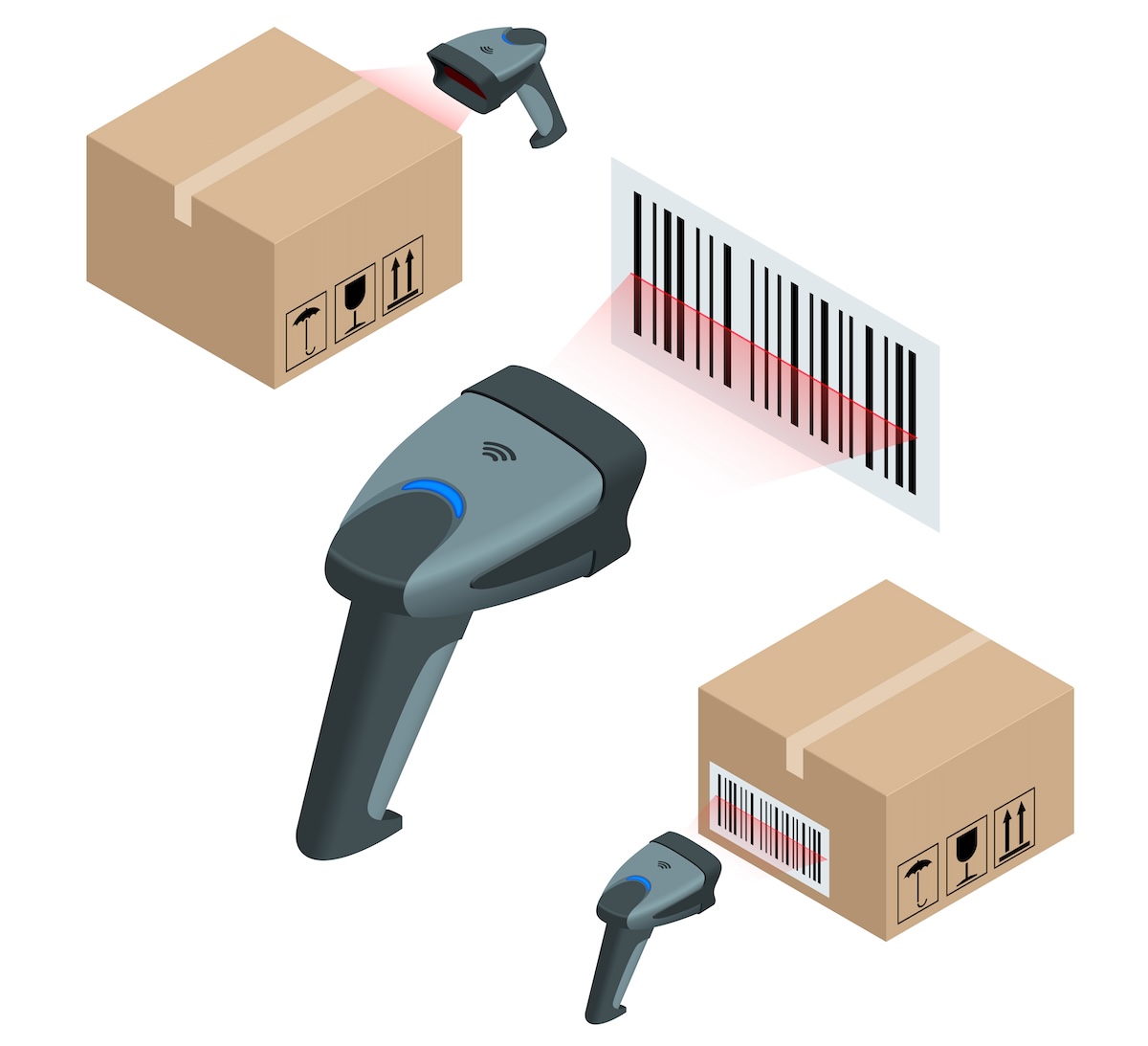Curious about RF scanners and how they can improve your warehouse operations? Learn how RF scanners enhance efficiency, accuracy, and real-time inventory management. This guide offers key strategies and practical insights to streamline your distribution processes and stay ahead in a competitive market.
Imagine it’s another bustling Monday at your warehouse or distribution center. As pallets of goods move seamlessly from trucks to storage, one aspect of your operation stands out for its efficiency: the adept use of RF scanners by your team. This isn’t new technology to you; in fact, RF scanners are as integral to your daily operations as the forklifts that navigate your warehouse aisles. Yet, there’s always room to refine and enhance how these tools are integrated into your workflow, ensuring your warehouse remains at the forefront of operational efficiency.
In the distribution industry, where precision and speed are non-negotiable, understanding the nuances of RF scanner technology and its application can set your operations apart. Let’s delve deeper into the world of RF scanners, elevating your knowledge and exploring strategies to leverage this technology more effectively in your warehousing operations.
What Are RF Scanners?
You’re likely already using RF (Radio Frequency) scanners in some capacity within your operations. These devices, whether handheld or wearable, serve as the critical link between the physical inventory in your warehouse and the digital data within your Business Management Software (ERP) or Warehouse Management System (WMS). But beyond their basic definition, the strategic integration of RF scanners can unlock new levels of efficiency and accuracy in inventory management and order fulfillment.
Consider RF scanners not just as tools for data entry but as the central nervous system of your warehouse. Their role extends beyond mere barcode reading; they facilitate a real-time dialogue between your team and your inventory, guiding every movement and decision with precision.
The Role of RF Scanners in Warehouse Management
If you’re at all familiar with RF scanners, you’ll appreciate their value in real-time inventory tracking and order picking. However, the true potential of these devices unfolds when they’re seamlessly integrated with an advanced ERP or WMS. This transforms data into actionable insights that drive decision-making and operational efficiency.
Here’s a scenario you might find familiar: A shipment arrives, and instead of the cumbersome manual checks of yesteryear, your team swiftly scans each item. This isn’t just about speed; it’s about the immediate visibility and accuracy this process brings to your inventory management. Every scan feeds into a larger system that optimizes your warehouse layout, predicts stock needs, and streamlines the picking process.
But even for seasoned users, there’s always more to learn and ways to improve. The next sections will guide you through selecting the most suitable RF scanners for your specific needs, integrating them more deeply with your ERP or WMS system, and exploring advanced features that can further enhance your warehouse’s efficiency. Plus, we’ll share insights for transforming operations through the strategic use of RF scanning technology.

Understanding the Mechanics of RF Scanners
RF scanners, or Radio Frequency scanners, are more than just barcode readers; they are sophisticated devices that facilitate the seamless transfer of data from physical items into digital systems. At their core, RF scanners utilize a combination of light sources (such as lasers or LEDs) to illuminate barcodes or RFID tags, sensors to detect the reflected light, and decoders to interpret the signals into readable data. This data is then transmitted wirelessly to your enterprise software or warehouse management system, updating inventory levels, order statuses, and more in real-time.
The process begins when the scanner’s light source illuminates a barcode or tag. The sensor captures the reflected light, converting it into an analog signal that the decoder then translates into digital data. This data, corresponding to specific information about the scanned item (such as product ID, quantity, and location), is sent through a wireless network connection to your ERP/WMS software. This system acts as the warehouse’s “brain,” using the received data to update inventory records, direct picking and packing operations, and manage shipments.
The Versatility of RF Scanners in Warehouse Operations
RF scanners are lauded for their versatility, playing a pivotal role in various warehouse operations:
- Receiving Inventory: Upon arrival, goods are quickly scanned, ensuring accurate and efficient entry into the inventory system.
- Order Picking and Packing: Scanners direct workers to the correct items, reducing errors and speeding up the fulfillment process.
- Inventory Management: Real-time updates from scanners allow for precise tracking of stock levels, facilitating better decision-making.
- Quality Control: Scanners help identify defective products or those nearing expiration, ensuring only the best items are shipped.
- Shipping: Scanned items are automatically matched with orders, streamlining the shipping process and reducing delays.
RF vs. RFID: Understanding the Differences
While often mentioned in the same breath, RF and RFID technologies have distinct differences. RF scanning typically requires line-of-sight and involves scanning individual barcodes, making it ideal for specific item identification and tracking.
In contrast, RFID (Radio Frequency Identification) uses radio waves to read tags attached to items, without needing direct line-of-sight, allowing for the simultaneous scanning of multiple items. This makes RFID better suited for bulk processing, such as checking in a pallet of goods at once. However, RFID’s higher cost per tag and potential for interference make RF scanning a more cost-effective choice for many warehouse operations.

Choosing the Right RF Scanner for Your Warehouse
Selecting the ideal RF scanner is a pivotal decision that directly influences the efficiency, accuracy, and overall success of your warehouse operations. Given the vast array of options on the market, pinpointing the scanner that aligns with your specific requirements demands a thoughtful consideration of several key factors. This guide aims to simplify your selection process, combining essential insights and practical advice into a single resource.
Assessing Your Needs and Environment
First and foremost, understanding the unique demands of your warehouse environment and operational workflow is crucial. Consider the following:
- Compatibility with ERP/WMS Platforms: The scanner must seamlessly integrate with your existing warehouse management or enterprise system to enhance, not hinder, inventory tracking and order processing. Verify compatibility early in your selection process to avoid costly mismatches. Your business software provider should be able to guide you toward RF devices that will meet your needs.
- Operational Requirements: Reflect on the volume of goods processed and the types of products handled. Scanners vary in their design for different environments—some excel in high-volume scanning scenarios, while others are tailored for specific conditions, such as cold storage or outdoor use.
- Durability and Usability: High-volume, fast-paced warehouses require scanners that are both durable and capable of rapid, accurate scans. User-friendliness is equally important; look for devices with intuitive interfaces and ergonomic designs to ensure they augment rather than complicate your team’s work.
Budget and Future Scalability
Balancing cost against features is a perennial challenge. While budget constraints are a reality, consider the total cost of ownership, including maintenance and potential software subscriptions. Additionally, future-proof your investment by opting for scanners that offer software updates, scalable features, and compatibility with emerging technologies.
Popular RF Scanner Models and Brands
To aid in your decision-making, here’s a snapshot of some leading RF scanner models, highlighting their features, pros, and cons. However, these are just examples. Talk to your warehouse management system provider for their recommendations.
- Features: Enterprise-class scanning, rugged design, intuitive Android interface, 1D and 2D barcode capabilities.
- Pros: High durability, excellent performance, extensive software support.
Honeywell Granit Series Barcode Scanners:
- Features: Superior scanning of 1D and 2D barcodes, designed for warehouse environments.
- Pros: Exceptional scanning capability, durable, comfortable design.
- Features: Omnidirectional reading of 1D and 2D barcodes, rugged design for warehouse environments.
- Pros: Excellent ergonomics, rapid scanning, visual confirmation of scans.
When evaluating these options, be sure to ask your software provider for recommendations. If you have the ability, consider conducting trials with a shortlist of models to gauge their performance in your specific environment. The right RF scanner can significantly enhance your warehouse operations, boosting both productivity and accuracy.

Wearable RF Scanners: Boosting Efficiency on the Move
In the hustle and bustle of warehouse life, wearable RF scanners stand out as true game-changers, offering a hands-free way to ramp up efficiency and keep things moving smoothly. Imagine your team zipping through aisles, hands and eyes free, focusing fully on the task at hand—this is the kind of workflow enhancement wearable scanners bring to the table.
Types of Wearable Scanners and Their Applications:
- Finger Scanners: Compact and lightweight, finger scanners are perfect for operations where workers need both hands free for picking and packing. They’re ideal for high-volume, fast-paced environments where agility is key.
- Wrist-mounted Devices: Offering a balance between functionality and mobility, wrist-mounted scanners allow for quick scanning while keeping the hands relatively free. They’re great for tasks that require frequent scanning and data entry.
- Head-mounted Displays: For a truly hands-free experience, head-mounted displays project information directly into the user’s line of sight. Best suited for complex picking processes, they can significantly reduce error rates and improve picking efficiency.
If you’re looking to cut down on handling times and supercharge your team’s productivity, especially during those critical picking and packing moments, wearable scanners could be just what you need.
Regular vs. Mobile Computer Scanners: Making the Smart Choice
Choosing the right RF scanner means understanding what your operation really needs. Do you need a straightforward tool that scans barcodes quickly and efficiently? Or are you looking for something that can do a bit more—like a device that not only scans but also processes data and keeps you connected to your software system in real-time?
Why Consider Mobile Computer Scanners:
- Comprehensive Functionality: These devices go beyond mere scanning, enabling on-the-go data processing, application running, and immediate access to your business management or warehouse system.
- Enhanced Connectivity: Equipped with WiFi and, in some cases, cellular connectivity, mobile computer scanners ensure that critical data is always within reach, facilitating informed decision-making anywhere in the company, even from delivery vehicles or customer locations.
For companies that demand more from their scanning devices—whether it’s conducting detailed inventory checks or updating systems on the fly—mobile computer scanners offer the multifunctionality needed to keep operations running smoothly and efficiently.

Integrating RF Scanners in Your Warehouse Operations
Integrating RF scanners into your warehouse operations is a strategic move that extends beyond the mere acquisition of new technology. It’s about embedding these devices into your daily workflows in a way that complements and elevates your existing processes. Achieving this seamless integration involves several key steps:
Training and Familiarization
Even for teams that are accustomed to using RF scanners, the introduction of new devices can bring about a learning curve. It’s imperative to invest in comprehensive training programs that cover not only the technical aspects of the new scanners but also the best practices for their application within your specific workflows. This ensures that your team is well-equipped to leverage the full potential of the technology from the outset.
Pilot Testing
Implementing new scanners across your entire operation should be approached with caution. Initiating a pilot program within a controlled segment of your warehouse allows you to identify any potential issues and make necessary adjustments to your processes or training materials. This phase is also an excellent opportunity to solicit feedback from your team, engaging them as active contributors to the integration process.
Continuous Monitoring and Optimization
The adoption of new RF scanners is not a one-time event but an ongoing process of refinement. Continuous monitoring of their performance and the overall impact on your operations is crucial. Utilize data from your Enterprise Resource Planning (ERP) or Warehouse Management System (WMS) to evaluate improvements in efficiency and accuracy, and be prepared to fine-tune your strategies accordingly. This proactive approach ensures that you are consistently maximizing the benefits of your RF scanning technology.
Keeping Up with Technological Advances
The landscape of RF scanning technology is continually evolving. Staying informed about the latest developments and features is essential for maintaining a competitive edge. Regularly reviewing your scanning needs and the advancements in technology should be an integral part of your operational strategy, allowing you to identify opportunities for further enhancements to your processes.
Connecting RF Scanners to Your Warehouse Management (WMS) or Business Enterprise (ERP) System
The full potential of RF scanners is realized when they are intricately integrated with your business software system of record. This connection offers a comprehensive view of your warehouse operations, from real-time inventory levels to order statuses and shipping schedules. Advanced ERP and WMS platforms can harness data from RF scanners to streamline workflows, forecast inventory requirements, and facilitate strategic decision-making. For example, insights gained from scanning data can influence warehouse layout planning, identify operational bottlenecks, and optimize labor management.
By understanding the critical role of RF scanners and their integration with ERP and WMS in modern warehousing, distribution centers can significantly improve their efficiency, accuracy, and overall performance. As the technological landscape continues to advance, keeping abreast of the latest trends in RF scanning and ERP or WMS integration is paramount for sustaining a competitive advantage in the dynamic world of distribution and logistics.

Real-World Scenarios: RF Scanners in Action
Understanding the theoretical benefits of RF scanners is one thing, but visualizing them in action brings a whole new level of appreciation. Let’s delve into a couple realistic scenarios of distribution warehouses harnessing the power of RF scanning technology to transform their operations.
Scenario 1: The Game-Changing Warehouse Overhaul
Imagine a mid-sized food and beverage distributor, struggling with inventory inaccuracies and slow order fulfillment rates. After integrating advanced RF scanners and fine-tuning their enterprise software, they witness a dramatic turnaround. Inventory accuracy soars from 89% to an impressive 99.5%, and order processing times are cut in half. The secret? A combination of rugged, high-speed scanners and targeted training that empowered their staff to make the most of the new technology. This distributor can not only improve operational efficiency but also enhance customer satisfaction with faster, more reliable deliveries.
Scenario 2: Small Changes, Big Impact
A smaller convenience store distribution company faces challenges with tracking their diverse inventory. By switching to wearable RF scanners, they enabled their team to work hands-free, significantly speeding up the picking process. This seemingly small change leads to a 20% increase in daily orders processed, without sacrificing accuracy. The wearable scanners also reduced physical strain on their employees, leading to higher job satisfaction and lower turnover rates. This story highlights how even minor adjustments in technology usage can yield significant benefits.
Streamline Your Warehouse Operations with CDR Software
In the dynamic world of warehousing and distribution, efficiency and accuracy are paramount. CDR Software is at the forefront of providing integrated solutions that enhance these aspects, particularly through seamless RF scanner integration and advanced warehouse management capabilities.
Key Features and Benefits:
- Seamless Integration with RF Scanners: CDR Software’s Warehouse Management System is designed to work hand-in-hand with RF scanners, ensuring real-time inventory tracking and accuracy. This integration facilitates swift order processing and inventory management, keeping your operations a step ahead.
- Optimized Order Management: Streamline your order fulfillment process with our system that simplifies order entry, tracking, and processing. This ensures that your customers receive their orders accurately and on time, enhancing customer satisfaction.
- Efficient Inventory Management: Gain visibility into your inventory levels in real-time, allowing for better decision-making and stock optimization. Our system helps prevent overstocking or stockouts, ensuring you have the right products when and where you need them.
- Industry-Specific Solutions: Whether you’re in the food and beverage, candy, and/or tobacco distribution sectors, CDR Software offers tailored solutions that address the unique challenges of your industry, from regulatory compliance to managing perishables.
- Dedicated Support: Our commitment to your success goes beyond software implementation. CDR Software provides comprehensive support to ensure your operations run smoothly, offering training, troubleshooting, and optimization services.
CDR Software empowers your warehouse and distribution operations to achieve new levels of efficiency and accuracy. By integrating with RF scanners and offering advanced management features, our solution streamlines your processes, from inventory management to order fulfillment. Discover the difference CDR Software can make in your operations today.
Conclusion: How RF Scanners Transform Warehousing
Diving into the world of warehousing and distribution, we’ve uncovered the essential role of RF scanners in boosting efficiency and accuracy. Our journey revealed how these powerful tools work seamlessly with warehouse management systems and enterprise software to bring about real change. They’re not just about keeping track of inventory in real-time; they make the whole process of fulfilling orders smoother and faster. Plus, we highlighted how important it is to pick the right RF scanner that fits perfectly with your unique operations, making sure you get the best out of this tech.
Take Your Operations to the Next Level with CDR Software
Ready to elevate your warehouse operations? CDR Software is here to help, with tailored solutions that are all about improving efficiency and accuracy in warehousing and distribution. Our all-in-one system, known for its easy integration with RF scanners, top-notch inventory management, and features designed for convenience distributors, is ready to tackle the challenges you face. Let CDR Software help you navigate the complexities of modern distribution and warehousing with ease. Reach out to us today and start your journey to a more efficient, smarter convenience distribution operation.
Frequently Asked Questions (FAQs) About RF Scanners
Even with a solid understanding of RF scanners, there are always questions that arise when considering new technology or looking to optimize existing tools. Here are some common FAQs that might resonate with your experience:
How do I ensure the RF scanners are durable enough for my warehouse environment?
Look for scanners rated for industrial use with specific durability features such as drop resistance, dust and water protection (IP ratings), and operational temperature ranges. Manufacturers often provide these specifications, allowing you to choose devices that match your environment’s demands.
Can RF scanners integrate with any WMS?
While most modern RF scanners are designed for broad compatibility, it’s crucial to verify integration capabilities with your specific software. Many hardware vendors offer consultation services to ensure their scanners work seamlessly with your existing systems.
What’s the difference between barcode scanners and RFID readers?
Barcode scanners require a direct line of sight to read codes, one at a time. RFID readers can scan multiple tags simultaneously without direct line of sight, offering speed and flexibility advantages. The choice between the two depends on your specific operational needs and the complexity of your inventory.
Are there cost-effective solutions for small to mid-sized warehouses?
Absolutely. Many manufacturers offer a range of scanners to fit various budgets, including entry-level models that don’t skimp on essential features. Additionally, considering refurbished or lease options can provide access to high-quality scanners at a lower upfront cost.

